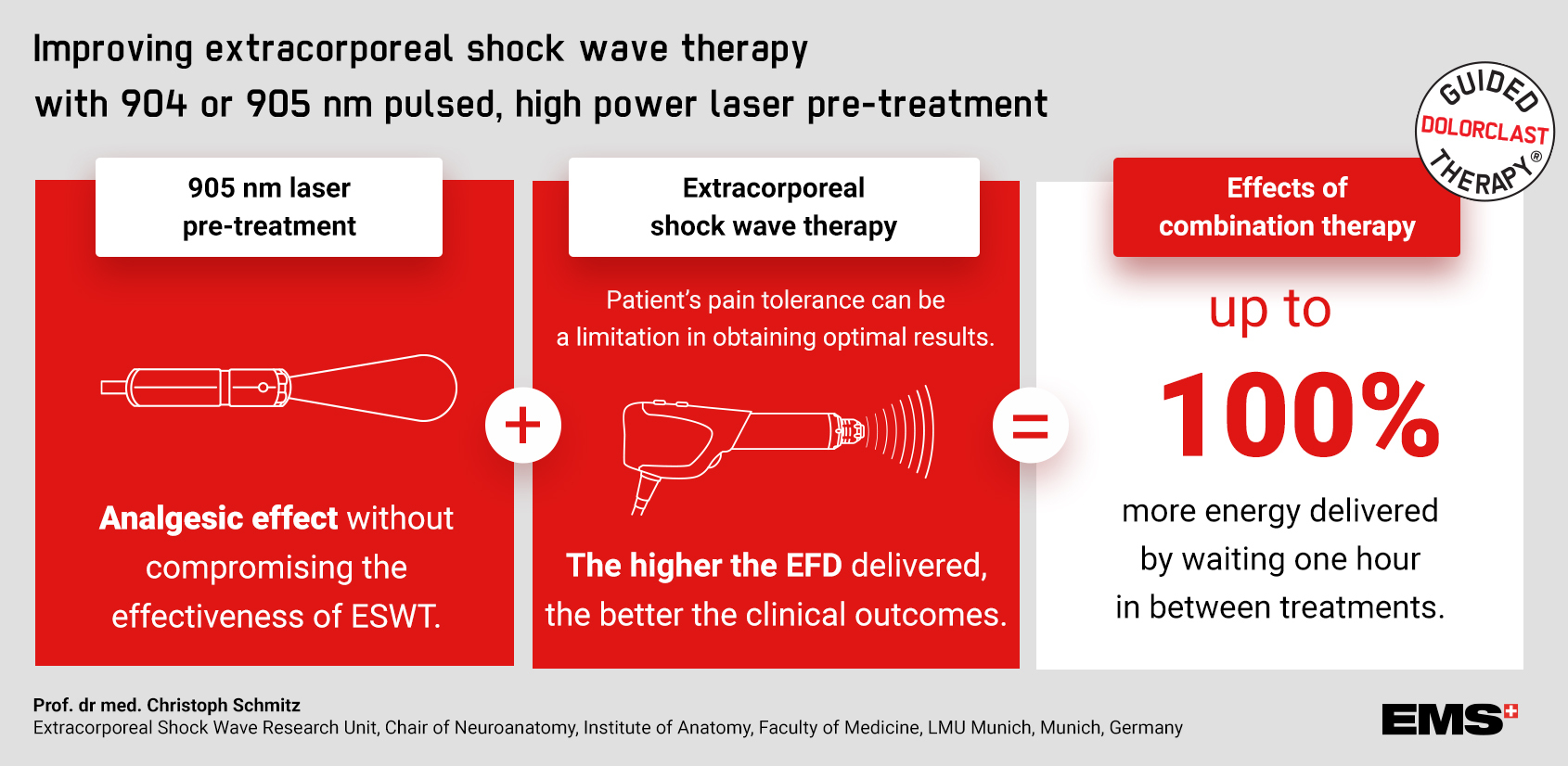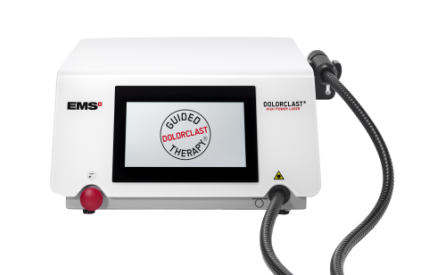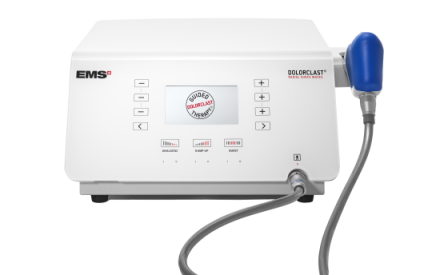Improving extracorporeal shock wave therapy with 904 or 905 nm pulsed, high power laser pre-treatment
Prof. Dr. med. Christoph Schmitz
Extracorporeal Shock Wave Research Unit, Chair of Neuroanatomy, Institute of Anatomy, Faculty of Medicine, LMU Munich, Munich, Germany
Read the full article

Background
Extracorporeal shock wave therapy (ESWT) is a well-investigated and commonly used treatment modality in remedying a variety of musculoskeletal disorders. However, a limitation of ESWT is its potential risk for painfulness at higher, clinically relevant energy flux densities (EFDs), which may limit its applicability and resultingly, its effectiveness.
E.M.S. is combatting this limitation with the Guided DolorClast® Therapy protocol, a comprehensively holistic approach towards musculoskeletal pain therapy. GDT includes a 6-step guidance program based on combined therapies, including the DolorClast® High Power Laser and the DolorClast® Radial Shock Waves devices. The following article provides clinical evidence for pursuit of this approach.
Hypothesis
It is hypothesized that patients suffering from various musculoskeletal disorders, who’ve been pre-treated with a pulsed, high power laser (HPL) with a wavelength of 904 or 905 nm, are then able to tolerate higher EFDs whilst undergoing subsequent ESWT. It may also result in a faster and/or better treatment outcome than ESWT which does not include laser pre-treatment.
Extracorporeal shock wave therapy
ESWT is an effective, safe, and non-invasive treatment option for patients with musculoskeletal disorders. The Physiotherapy Evidence Database (PEDro) has listed more than 150 randomized controlled trials (RCTs) on ESWT. The mode of action of ESWT on musculoskeletal tissue is linked to the overstimulation of C-nerve fibers. Firstly, it lowers the concentration of substance P and brings about pain relief. Secondly, it blocks the development of neurogenic inflammation. Thirdly, it increases the emergence of growth factors such as BMPs, eNOS, VEGF and PCNA, which are involved in tissue reparation and regeneration. Another essential feature of ESWs is their energy flux density, where the applied amount is a factor in the clinical outcome. However, application of high and clinically relevant EFDs may become very painful and unbearable for patients, consequently limiting its effectiveness and applicability. Applying local anesthesia prior to ESWT treatment has indeed led to pain reduction, however, it has been proven to disrupt and hinder the needed execution of ESWT on nerve fibers and on substance P. This is the reason why it is associated with poorer clinical outcomes than just with the sole use of ESWT.
In light of this, E.M.S. has investigated high power laser devices as a potential alternative.
High power laser
The mode of action of a pulsed, high power laser with 904 or 905 nm wavelengths is associated with reducing the firing rate of the nociceptors. This creates a strong analgesic effect in just a few minutes. Moreover, it lowers the concentration of prostaglandin E2 (PGE2), which is a key producer of acute inflammation. Specifically, a selected laser wavelength determines its depth of penetration and enables a drop in the inflammatory process and in the transmission of pain sensations via inflammatory nociceptors. Currently, there are 23 RCTs in the PEDro database with regards to the treatment of musculoskeletal disorders with a 904/905 nm pulsed, high power laser alone. However, the number of required treatment sessions with HPL, in comparison to ESWT, was significantly higher, which limits its attractiveness in the monotherapy of musculoskeletal conditions.
Preliminary Results
It has been reported that performing a laser treatment before applying ESWT gave rise to an increase in EFD of up to 50% just 5 minutes after laser pre-treatment and up to 100% when waiting one hour in between. The merging of both these treatment solutions leads to synergistic effects and their conjoined result proves highly superior to separate applications of either treatment. This study was conducted with the DolorClast® High Power Laser comprising a 905 nm wavelength and the DolorClast® Radial Shock Wave Therapy device.
Conclusion
Combining High Power 905nm laser treatment and ESWT may increase the beneficial use of ESWT in physical and rehabilitation medicine. Further confirmation of this hypothesis in both preclinical and current or ongoing clinical research is required.
E.M.S. is henceforth further investigating this combination therapy and wholeheartedly invites concerned practitioners to test these new technologies, on a trial basis, for the purpose of raising the bar and changing the game in the advancement of pain therapy


